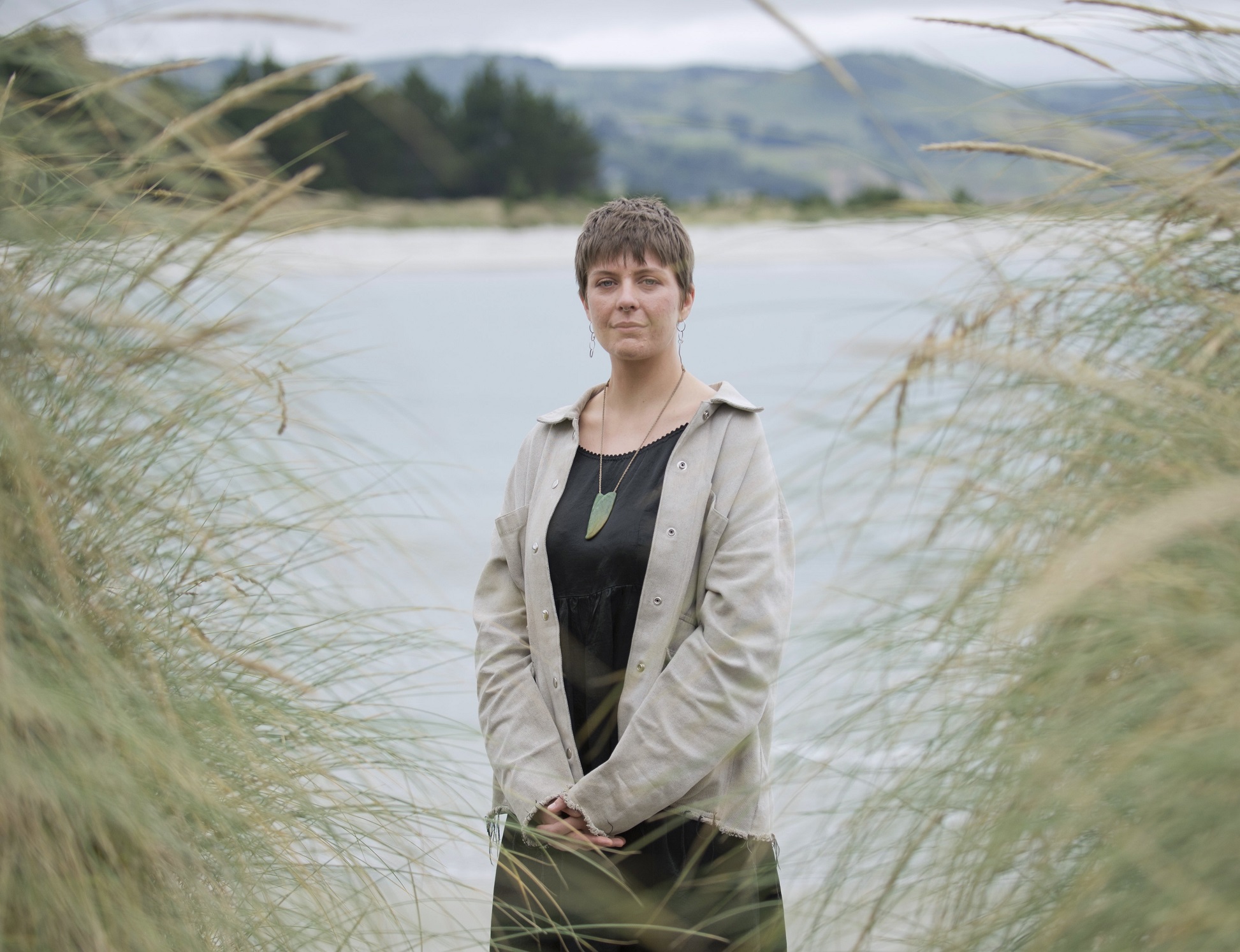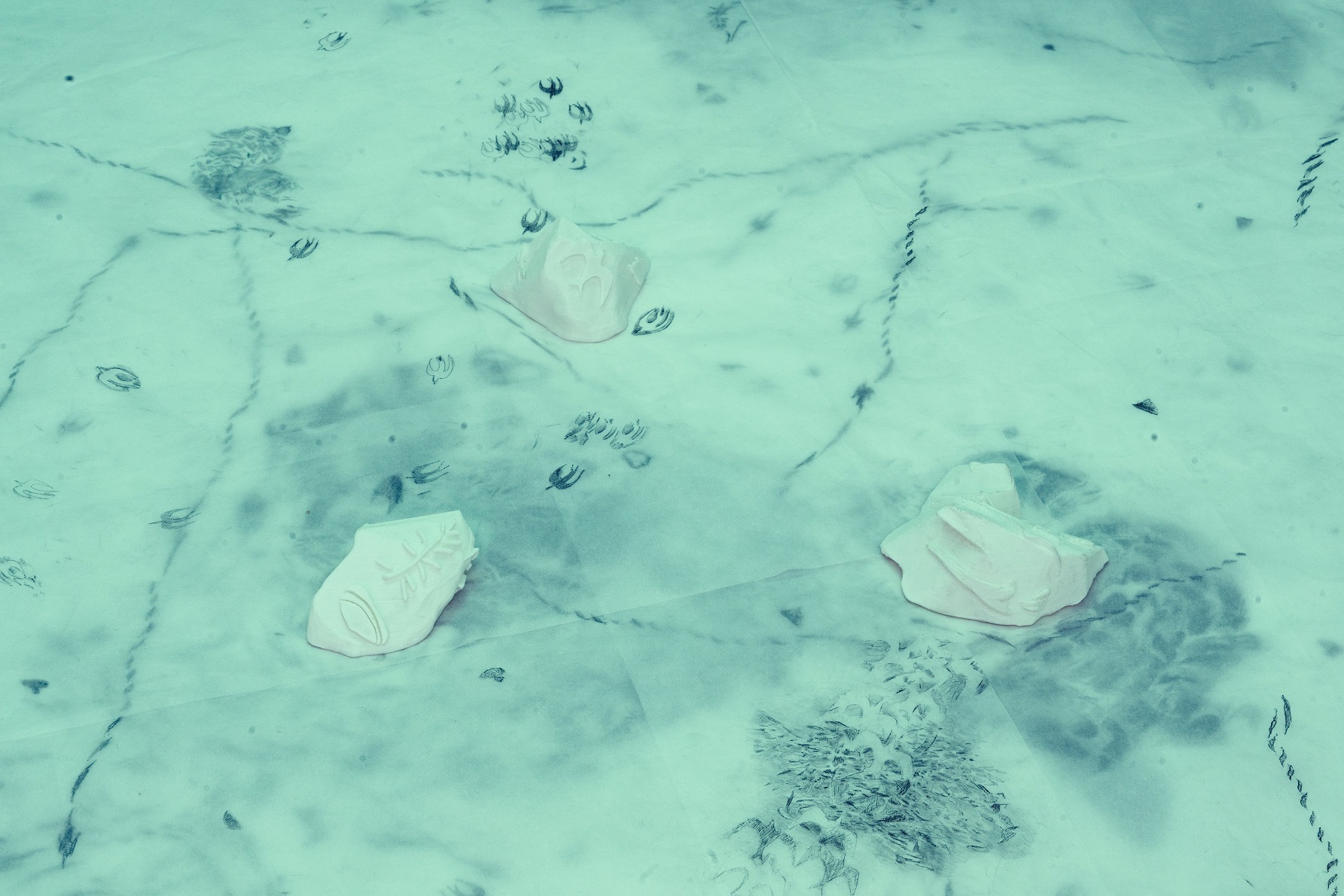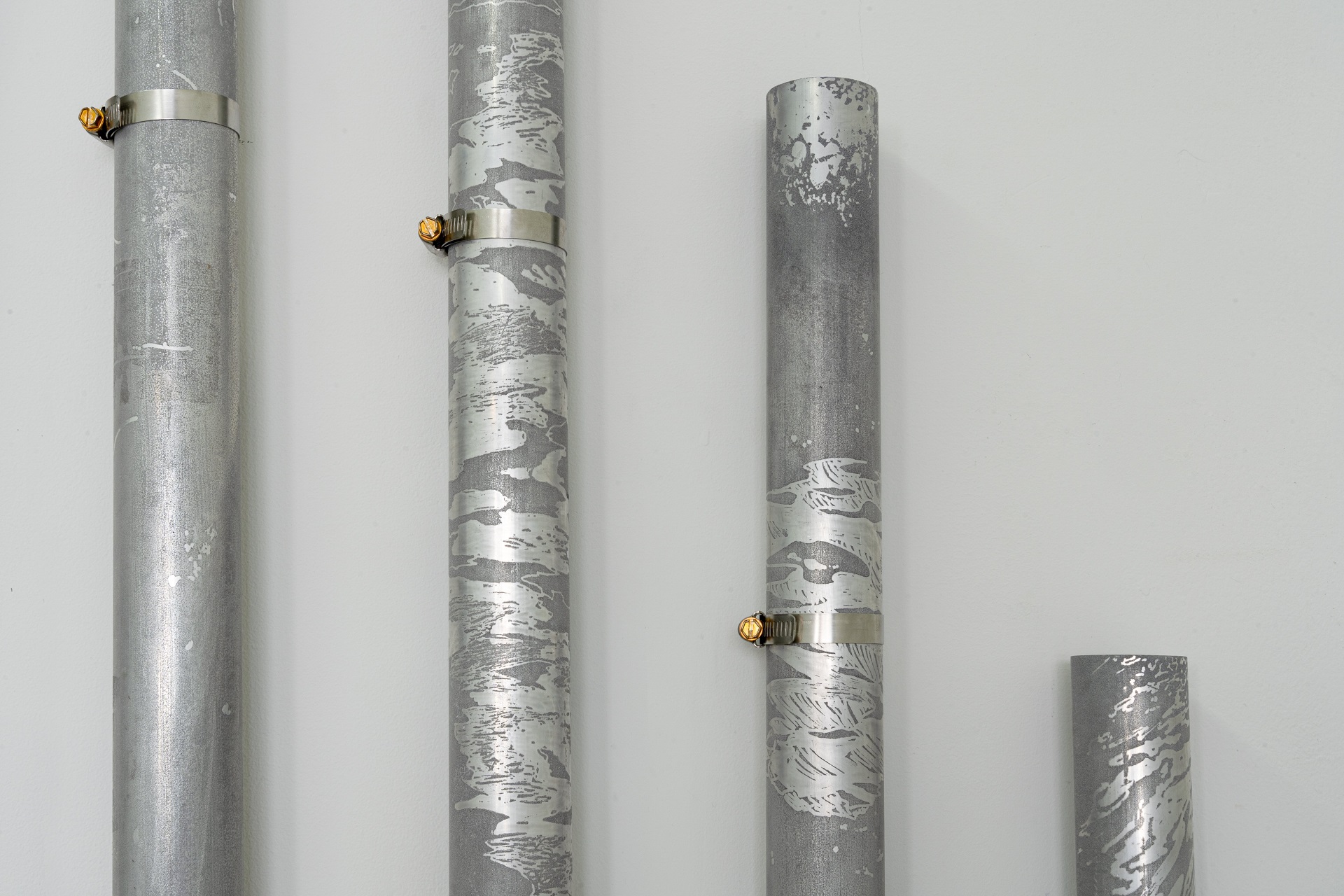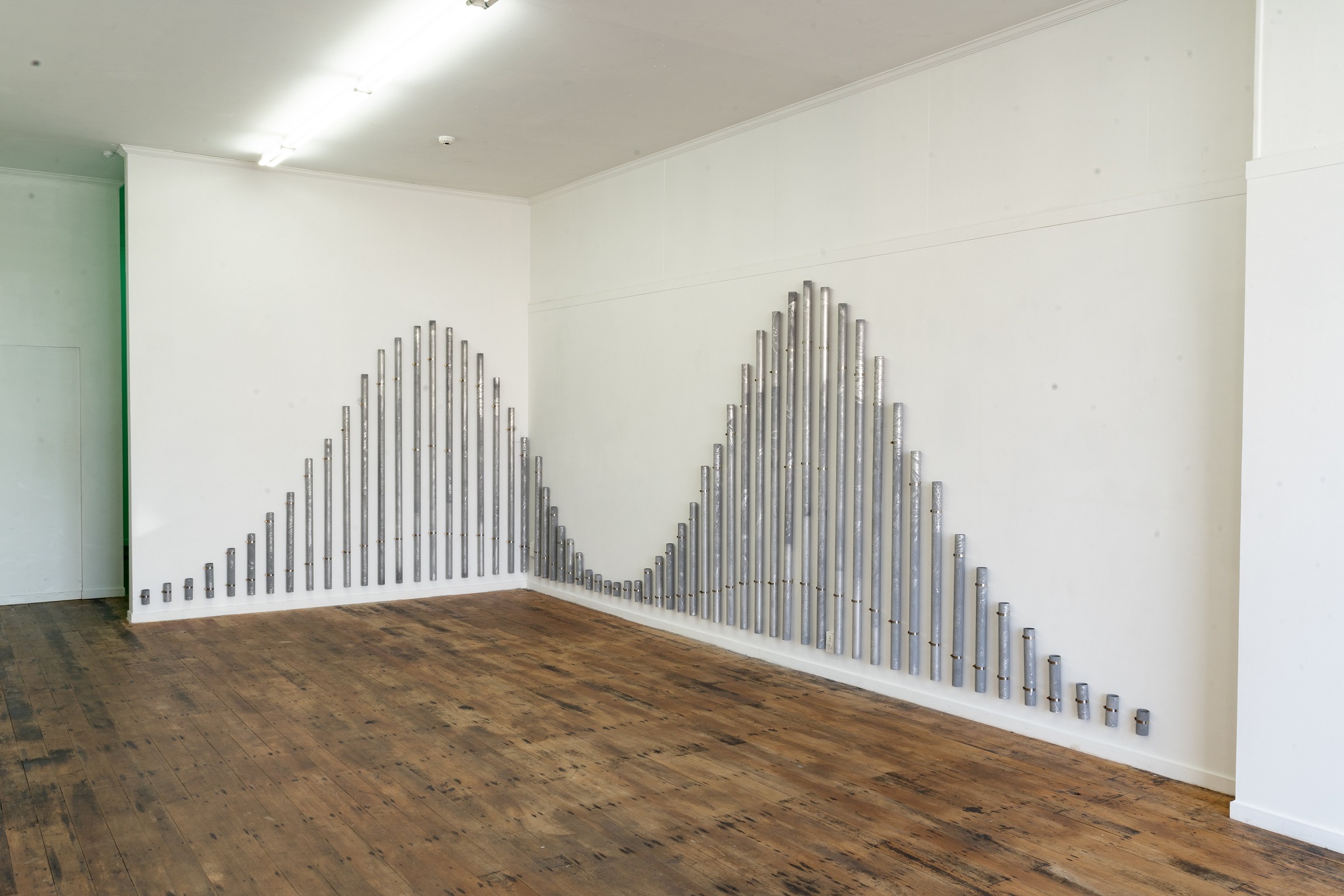
A story of love and loss between her ancestor Ngai Tahu tipuna Patahi and sealer Edwin Palmer during the early settlement of Europeans around Otago Harbour struck a note with artist Madison Kelly.
While Kelly (Ngai Tahu, Kati Mamoe, Pakeha) was the Blue Oyster Art Project Space Caselberg Trust summer resident at Broad Bay earlier this year, she read the transcribed korero of Patahi and her relationship with Palmer as his trade took him to and from the coast.
"It took over a lot of my thinking. There were almost more threads of information from that which will have to continue elsewhere. Now I’ll have to find projects to hold them."
That was the bonus of the residency: having the time to read and research her whakapapa as it relates to the Otago Harbour area and the way her tupuna family moved in and out of the area, she says.
"It was awesome. Even after the residency was done I was still going back to the harbour."
It informed the development of her work throughout the year, which has culminated in an exhibition at Blue Oyster Art Project Space this summer.
In her proposal to Blue Oyster she was thinking about ways to connect to ecology and whakapapa at the same time.
"For me the entry point was this idea of sensory interface, ways we could touch or use sound or other senses to tap in to taiao, to nature."
So during the residency the project became about how to record and invite other people into the tide and rhythms in a sensory way.
"I wanted to use sound or touch as well as drawing and observation but it wasn’t until the residency that I began to shape it around tides and some of the rhythms of the ocean."

"My background is a mix of ecology and arts, arts and science. I’m always interested in how a project can hold a combination of things te ao Maori whakapapa but also a full ecology that is not just a human thing which relates to my mahi as well.
"My whole job is thinking about how we can connect to not just people but the environment as well."
After graduating six years ago from the Dunedin School of Art, where she received first class honours in drawing, Kelly began working at Orokonui as a weekend guide and over time it became a more involved role.
"I really wanted to hold on to some element of science communication. At art school my whole focus was on researching and making drawings about how we relate to endangered species, especially the ones we can’t relate to. I was trying to find ways to continue learning, researching and communicating ideas around conservation and native species."
She is also privileged to whakapapa to Kati Huirapa Runaka ki Puketeraki, which has kaitiaki (guardianship) over the Orokonui area.
"It’s another connection which is really beneficial and rewarding."
Kelly finds there is a nice continuity between her art practice and the goals of Orokonui and places like Blue Oyster, where she helped visiting artists connect with nature.
"I’m lucky I can work part time across multiple things. It’s a huge win that comes down to working in Otepoti and having a studio in town."
A lot of her practice is based on field recordings at specific sites rather than in the studio.
"It’s a lot of being outside, working with drawings or sound recordings or video to gather a feeling or a knowledge for that place. After that it is a lot of digesting and figuring out a way to translate it into a thing that could be accessible to other people."

"Lots of things that continue on these big, long cycles."
So she spent most of the year collecting field journals of different patterns and species around the harbour then translating it into two parts, one based on the rocks, the other on the tides, but both have an element of touch or sound that people can engage with.
"So lots of time, attention and waiting. And a lot of korero with whakapapa and my own family as well as a lot of those places are directly connected to whanau or those interesting histories that form so much of the Otago area."
The thoughtful korero with her family also resulted in her uncle contributing a poem to the show in response to that.
"That was a really cool outcome and there is the potential to continue thinking about and sharing family histories and the longer connections to the ocean as well — hopefully I can do more of that."
Kelly also learnt a lot about the old forests that once surrounded the edge of the harbour.
"So much of the edge of the harbour had been manipulated to become the roads. I spent a lot of time looking at the rocks that formed the sea walls and learning about the forest composition — there are small stands of remnant forest around which give you an idea. That was really interesting to investigate which trees were left, when they were seeding and how they were doing over time," Kelly says.
She is also hoping to incorporate her love of making music with a performance in the exhibition as well as a drawing workshop.
"We’re going to [base] some sort of percussive performance around that."
While Kelly’s latest projects may seem to be more installation or sculpturally based, she says they are all grounded in drawing. In the Blue Oyster show there is a tidal chart of pipes and each is etched with observations.

The 3D-printed rocks which form the second part of the exhibition have drawings set in them providing a texture to the surface.
"Drawing becomes this really integral way to record. I’m really interested in like how the drawings can become new surfaces, another layer that can be activated so they’re not this solo record."
By doing this she hopes to bring those "personal individual encounters or thoughts" in the environment to people who do not have the time to "sit in the harbour all day".
"You need to find new ways to share them with people who do not have the same point of entry yet. Quite similar to working out at the ecosanctuary, you try to find some clever entry points to share or learn together."
It is the beginning of another busy year for Kelly, who has a couple of solo shows later in the year that she is working towards. Last year she also took part in exhibitions "Pollen in the Trough" at Wormhole, Edgecumbe and "Gift" at the Ashburton Art Gallery.
"So a lot of exhibition making."
It also comes on the back of a busy 2021, where she was involved in two major shows at the Dunedin Public Art Gallery — "Paemanu: Tauraka Toi" and "He Reka te Kumara".
"It’s so central to the city and [to] have so much whanau and friends involved and being so Kai Tahu-specific as well. That was a really cool year and definitely supported and informed so much of my work for Blue Oyster this year."
To see:
Toko by and by, Madison Kelly, Blue Oyster Art Project Space, until February 3.












